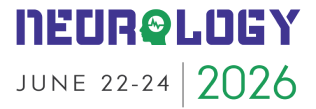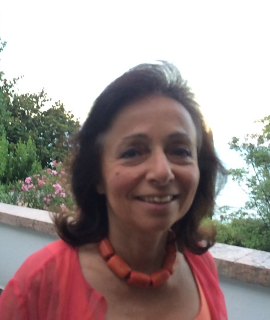Title : New insights in Neuron-Astrocyte communication: Astrocytic G protein coupled receptor heteromers and release of glutamate
Abstract:
It is increasingly recognized that neurons and astrocytes are co-actors in the communication in central nervous system (CNS). Central to the view of astrocytes as active contributors in brain signaling are the astrocytic receptors that respond to neurotransmitters and the neuronal receptors acted upon by gliotransmitters at tripartite synapses. Recognition and decoding of signals via G Protein- Coupled receptor (GPCR)-receptor interaction and heterodimer formation at neuronal plasma membrane, hypothesized since the ’80s by Agnati and Fuxe, at Karolinska, is now generally accepted. GPCR heteromers exhibit a unique pharmacology, with changes in receptor agonist recognition, signaling and trafficking, providing targets for innovative pharmacological approaches to CNS disorders.
Despite the relevance of neuron-astrocyte networking in the CNS function, the possibility that the integrative information handling via receptor-receptor interactions may also function at astrocyte membrane level has barely been investigated.
Here, the presence and function of A2A-D2 heteromers on striatal astrocytes was investigated on slices and isolated purified astrocyte processes obtained ex vivo from adult rat striatum. We measured the release of the glutamate analogue 3H-D-Aspartate from superfused processes; receptor colocalization in slices and in the processes was investigated by immunofluorescence and proximity ligation assay (PLA), co-immunoprecipitation by Western analysis.
Our major findings: purified processes prepared ex vivo from astrocytes matured in situ in striatum neuron-astrocyte network were capable of vesicular glutamate release, that could be controlled by D2 receptor activation; A2A receptors appear co-localized with D2 receptors on the processes, and able to functionally interact with the receptor. Biochemical and biophysical evidence indicating heteromerization of native A2A-D2 on the striatal astrocyte plasma membrane were obtained by co-immunoprecipitation and PLA analysis.
It is concluded that A2A-D2 heteromers at striatal astrocyte plasma membrane are a new research area to understand the striatal astrocyte-neuron intercellular communication and the astrocyte involvement in glutamate transmission dysfunction in neurodegenerative/neuropsychiatric conditions. Also, striatal astrocytic A2A-D2 heteromers can be exploited as druggable targets. Defective function of striatal astrocytic D2 (and consequent glutamatergic dysregulation and vulnerability to neuron injury) may be improved by targeting the allosteric inhibition of D2 in A2A-D2 heteromer, by acting upon A2A (A2A antagonists or bivalent compounds) or by controlling homocysteine production (COMT inhibitors), for a potential therapeutic for PD and L-DOPA dyskinesias in PD treatment.
Our findings, which suggest that reduced D2-mediated control at striatal perisynaptic astrocyte processes might result in an increase in synaptic glutamate level, could help to understand how astrocytes (and remodeling of astrocyte processes) contribute to the pathophysiology of Parkinson's disease. Indeed, expansion of perisynaptic astrocyte processes, and altered neuron-astrocyte interactions at striatal glutamatergic synapses, have been reported in Parkinson's disease. We propose that we cannot longer think about striatal D2 signaling, adenosine transmission, and glutamate transmission (and L-DOPA dyskinesias) without considering striatal astrocytes, and astrocyte-neuron communication.
What will audience learn from your presentation?
- G Protein-Coupled receptor heteromers at astrocyte plasma membrane are a new research area to understand striatal astrocyte-neuron intercellular communication
- Astrocytes can be involved in glutamate transmission dysfunction in neurodegenerative/ neuropsychiatric conditions
- Striatal astrocytic A2A-D2 heteromers can be exploited as druggable targets
- We cannot longer think about striatal D2 signaling, adenosine transmission, and glutamate transmission (and L-DOPA dyskinesias) without considering striatal astrocytes, and astrocyte-neuron communication




